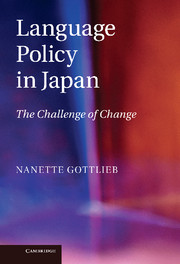Book contents
- Frontmatter
- Contents
- Preface
- Acknowledgments
- 1 Language ideology, planning and policy
- 2 The language needs of immigrants
- 3 Foreign languages other than English in education and the community
- 4 Technology and language policy change
- 5 National language policy and an internationalising community
- Conclusion
- Notes to the text
- References
- Index
4 - Technology and language policy change
Published online by Cambridge University Press: 05 December 2011
- Frontmatter
- Contents
- Preface
- Acknowledgments
- 1 Language ideology, planning and policy
- 2 The language needs of immigrants
- 3 Foreign languages other than English in education and the community
- 4 Technology and language policy change
- 5 National language policy and an internationalising community
- Conclusion
- Notes to the text
- References
- Index
Summary
It is no accident that the most clearly marked policy development in recent years, apart from the announcement of the Action Plan to Cultivate Japanese with English Abilities, relates to kanji. For one thing, the kanji policy is relatively easy to change, because it already exists as a policy document; while arguments surrounding the recent increase in content were many and varied, they centred on which characters should be added or deleted rather than on whether the policy itself should be changed to accommodate an increase. For another, kanji are the venerated icons of Japan's writing system: reinforcing their position is in line with the language ideology surrounding characters discussed in Chapter 1. We have seen that despite the availability of an alternative means of writing in the form of the kana, literacy in Japan is judged by the ability to use kanji correctly; use of kana where kanji would be the norm is not encouraged, despite its frequent occurrence. This means that ‘kanji heavily contribute to the lengthening of acquisition of literacy, which is often a lifelong process’ (Akamatsu 2006: 486). It takes until the end of the nine years of compulsory education to teach the full List of Characters for General Use. Over the two decades between 1975 and 1995, the teaching of writing was the most researched and discussed aspect of national language education in Japan (Namba 1995: 64), a situation which has continued since then. ‘Under the conditions of a writing system that makes use of Chinese characters’, Coulmas (1994: 312) comments, ‘literacy is a graded notion. This is true, of course, also of alphabetic literacy, but with Chinese characters this gradation is more obviously encoded in the writing system.’ Everyone who has completed compulsory education is expected to know and to use a certain level of kanji, whether or not this is actually the case in practice. Little wonder, then, that discussion of literacy standards, by which is frequently meant kanji proficiency standards, features so frequently in both the academic and popular literature.
- Type
- Chapter
- Information
- Language Policy in JapanThe Challenge of Change, pp. 98 - 122Publisher: Cambridge University PressPrint publication year: 2011

